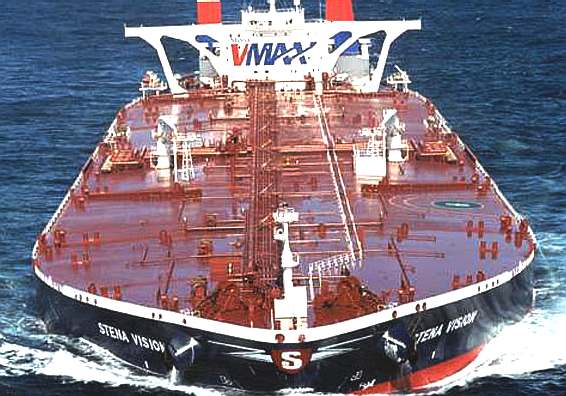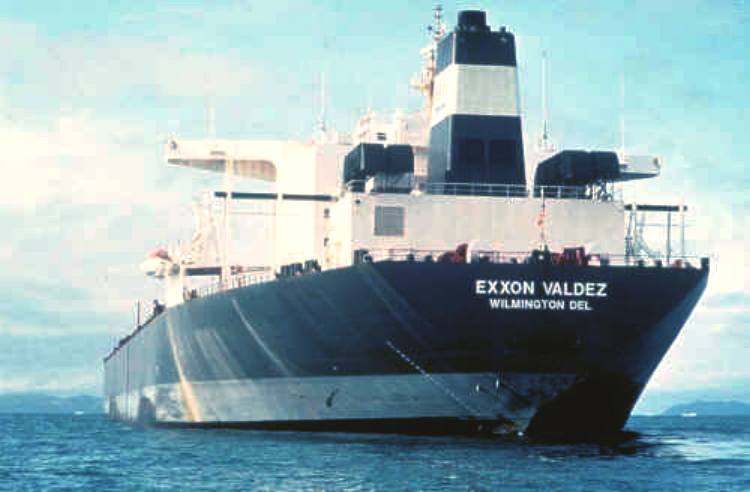|
OIL TANKERS SAFETY & SPILLAGES
|
|
HOME | BIOLOGY | FILMS | GEOGRAPHY | HISTORY | INDEX | MUSIC | THE BOAT | SOLAR BOATS | SPONSORS |
|
The
Tanker; industry's ocean artery
VLCC Stenna Vision
What is the technology to deal with oil spills? The technology to deal with oil spills has not changed much since the Exxon Valdez disaster in 1989, says Toby Stone of the Maritime and Coastguard Agency (MCA). Recovering oil is still a fairly basic function, he says, but management structures and prevention have improved.
What are the options once an oil spill has happened? Given the type of fuel - heavy oil - that spilled from the Prestige, options are limited. It is difficult to handle, hampering attempts for mechanical recovery at sea. The oil spilled while the ship was on the surface will quickly disperse to cover a large area. The International Tanker Owners Pollution Federation (ITOPF) says the best move is shoreline protection.
A chemical dispersant can be applied to lighter crude oil, breaking up the fuel much as washing up liquid would in oily dishwater. But that is not an option for the fuel spilled from the Prestige.
At other times, clean-up experts will simply monitor a slick from the air and wait for it to biodegrade into the ocean.
Authorities may choose to deflect oil from sensitive ecological or commercial areas with booms, covering another beach in oil and cleaning it up.
If a tanker's crew catch a potential spill in time, salvage experts may be able to transfer the cargo to another tanker before it spills into the sea.
What happens to oil once it is recovered? Once oil has been scooped off a beach or skimmed off the surface of the ocean, the response teams must dispose of it. The MCA names a number of options, all of them costly: · Recover and reprocess the oil
Why not bomb the ship to burn off the oil? That may be a possibility with a crude oil, if the spill is concentrated and contained, according to the International Tanker Owners Pollution Federation (ITOPF). But a heavy oil will not burn unless it is heated up, and once it has mixed with water there is even less of a likelihood it will burn.
What happens to the oil left in the ship when it sinks? If the storage compartments hold, the oil could simply remain sealed in the ship. If does leak out once the ship reaches the sea bed it will probably do so very slowly, ITOPF estimated. Salvage company Smit International reckoned the oil may freeze.
What's happened in past oil spills? The Exxon Valdez spilled about 38,800 tonnes of crude oil into Alaska's Prince William Sound in March 1989.
Clean-up crews found the carcasses of more than 35,000 birds and 1,000 sea otters, but believed most of the animals' remains would have sunk, according to the Exxon Valdez Oil Spill Trustee Council. The council estimated the dead wildlife at 250,000 seabirds, 2,800 sea otters, 300 harbour seals, 250 bald eagles, around 22 killer whales, and billions of salmon and herring eggs.
Advertiser links
WWF - Animal CharityWWF works to protect endangered species and their habitats,...
Will the ocean just wash away the oil? Yes, eventually. Ocean waves probably cleaned more oil away from Alaska's beaches than the three-year clean up effort that cost Exxon $2.1bn. But in the meantime, Alaska lost about $2.8bn in hunting, fishing and holiday revenues.
Why are single hulled tankers still around? All new oil tankers built since 1996 must have a double hull, which offers greater protection against spillage. The 158 member states of the International Maritime Organisation - a UN body - agreed last year to phase out most single hull oil tankers by 2015.
The exception: countries can register newer single hull ships if they comply with certain technical specifications. Even these tankers can only continue trading until the 25th anniversary of their delivery.
The IMO will allow other states to deny these single hull tankers entry at their ports after the 2015 cutoff. The EU has said it will deny access to these tankers.
Are oil spills becoming more common? No, quite the opposite. ITOPF tracks oil spills and says the number of large spills (those over 700 tonnes) in the 1990s was about one third of those in the 1970s. ( The oil tanker Prestige sank off the coast of Spain on Wednesday the 20 November 2002)
HOW
MUCH OIL DOES YOUR FAMILY USE?
SHIPPING RELATED LINKS
Baltic and International Maritime Council Australian Maritime Safety Authority California Maritime Academy Maine Maritime Museum Maritime and Coastguard Agency Maritime Companies Maritime History and Naval Heritage Homepage Maritime Schools Pacific Maritime Group PORT - Maritime Information Gateway The International Maritime Organisation The Maritime History Virtual Archives The Maritime Museum of the Atlantic The Mother of All Maritime Links Welcome to Maritime Global Net
MARINE INSURANCE: SAIL, POWER, TRAWLERS, LINER, YACHTS, RIBs, TENDERS, TANKERS, CARGO, CONTAINERS
FAMOUS OIL TANKER SHIPWRECKS
1967 Torrey Canyon UK - 119,000 tonnes 1978 Amoco Cadiz Brittany - 220,000 tonnes 1989
Exxon Valdez Alaska - 38,800 tonnes
|
|
This website is Copyright © 1999 & 2013. The bird logos and name Solar Navigator are trademarks. All rights reserved. All other trademarks are hereby acknowledged. Max Energy Limited is an educational charity. |
|
AUTOMOTIVE | BLUEBIRD | ELECTRIC CARS | ELECTRIC CYCLES | SOLAR CARS |

